Tourist Attractions in Marrakech
The Riad is conveniently located close to most of the popular tourist attractions in Marrakech, including Jma El Fna Square, Madrasa Ben Youssef, Bahia Palace as well as the Souks. This page lists just some of the many attractions that we would recommend you to visit.

Medina and Souks
Marrakech's labyrinth Medina (Old City) district is the star attraction here. The narrow alleyways are a kaleidoscope of colours, scents and sounds, and bound to be the sightseeing highlight of your trip. As well as simply wandering (and getting lost) amid the bustling maze, there are myriad shopping opportunities where you can put your haggling hat on and barter to your heart's content.
Distance from Riad - You’re already in the Medina
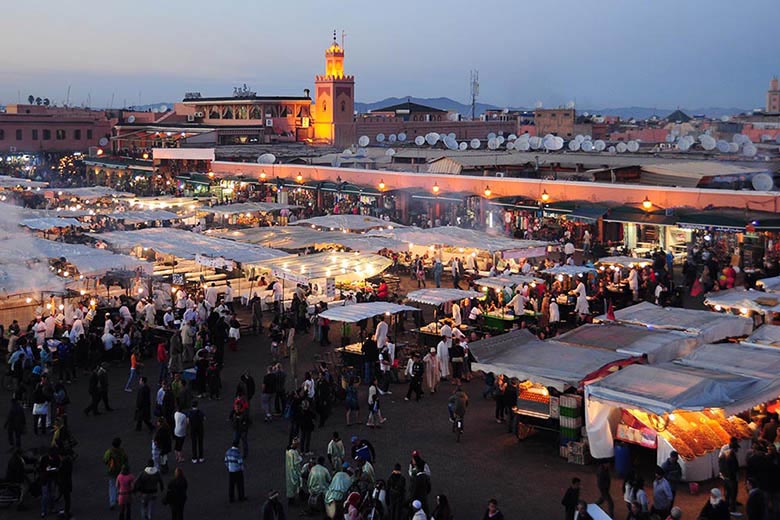
Jma El Fna
Jma El Fna is the centre of Marrakesh life and is a vibrant hub of bric-a-brac stalls, musicians, storytellers and snake charmers that never seems to rest. Here the entire spectrum of Moroccan life enfolds before you. It's also easy to escape the crowds to one of the many surrounding rooftop cafes and restaurants where you can survey the crazy scene from above.
Distance from Riad ~ 7 mins by foot
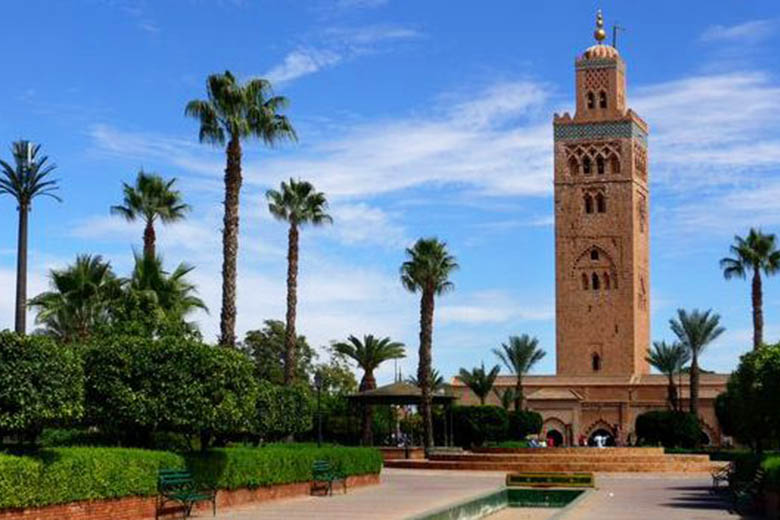
Koutoubia Mosque
Koutoubia Mosque is Marrakech's most famous landmark with its striking, 70 m tall minaret visible for miles in every direction. The mosque was built in 1162 and is one of the great achievements of Almohad architecture. Non-Muslims are not allowed into the prayer hall.
Distance from Riad ~ 10 mins by foot
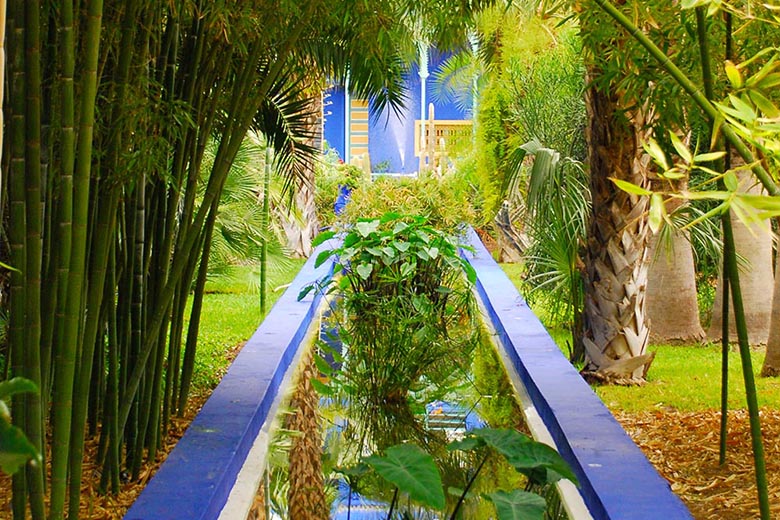
Majorelle Gardens
This enchanting 12-acre botanical garden is one of the most visited sites in Morocco and is full of cacti, palms and ferns, It was designed by the French artist Jacques Majorelle in the 1930s and has been owned by the late French fashion designer Yves Saint-Laurent since 1980. A small pavilion on site has a small but interesting collection of Islamic art.
Distance from Riad ~ 10 mins taxi / 40 mins by foot
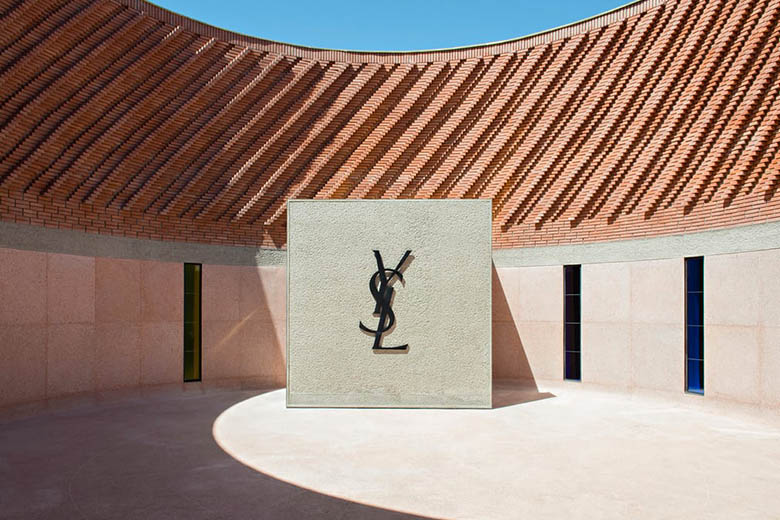
Yves Saint Laurent Museum
The Musée Yves Saint Laurent opened in October 2017 and is dedicated to the late fashion designer who was well known for his love of Marrakech. The building, which is located directly behind the Majorelle Gardens, is designed to reflect the curves of the designer’s work and features Moroccan stone and architecture that lends itself to the hot climate.
Distance from Riad ~ 10 mins taxi / 40 mins by foot

Madrasa Ben Youssef
Built in 1565 by the Saadians, this Madrasa (Islamic school of learning) is the largest theological college in Morocco. The warrens of student cells, once home to 900 pupils, are clustered around small internal courtyards in typical Islamic architecture style. The fine zellige tiling, stalactite ceilings and Kufic inscriptions used as decoration across much of the building interior are the highlights of a visit to this Medina attraction.
Distance from Riad ~ 10 mins by foot

Le Jardin Secret
The riad-museum Le Jardin Secret (The Secret Garden) is one of the largest and most ancient riads in the Mouassine quarter and just a few steps away from the Mouassine fountain and Mouassine Mosque. It comprises two large gardens and one of the highest towers of the medina. The museum provides you with a wealth of historical information about Marrakech's architecture, water, and gardens. You will also find a boutique, a bookshop and two cafes inside the complex.
Distance from Riad ~ 10 mins by foot
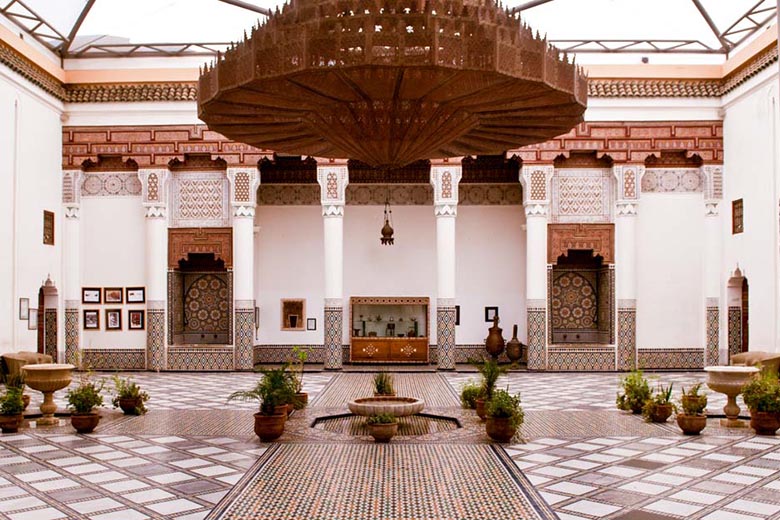
Marrakech Museum
The Marrakech Museum has an eclectic collection, which ranges from contemporary art to Qur'anic inscriptions with local ceramic work, textiles and coins thrown in for good measure. The real highlight is the building the museum is housed in - the Dar Me'nebhi was built in the early 20th century and the architecture is a harmonious blend of local North African form with Portuguese elements, and features an extremely impressive central courtyard area with lavish chandelier.
Distance from Riad ~ 10 mins by foot
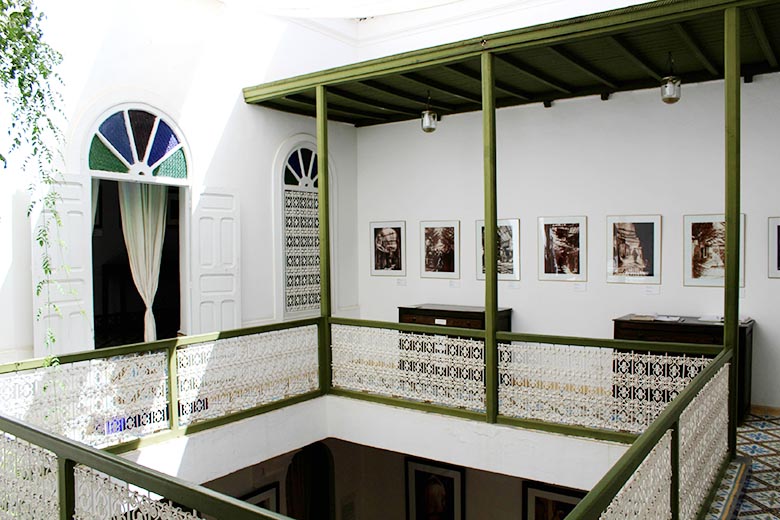
Photography Museum (Maison de la Photographie)
The Photography Museum has a collection of over 4,500 old photographs covering the period 1870-1950 and provides a unique and fascinating field of insight into various historical and cultural aspects of Morocco. The museum holds exhibitions of photos from its collection on different themes, which change every six months.
Distance from Riad ~ 12 mins by foot
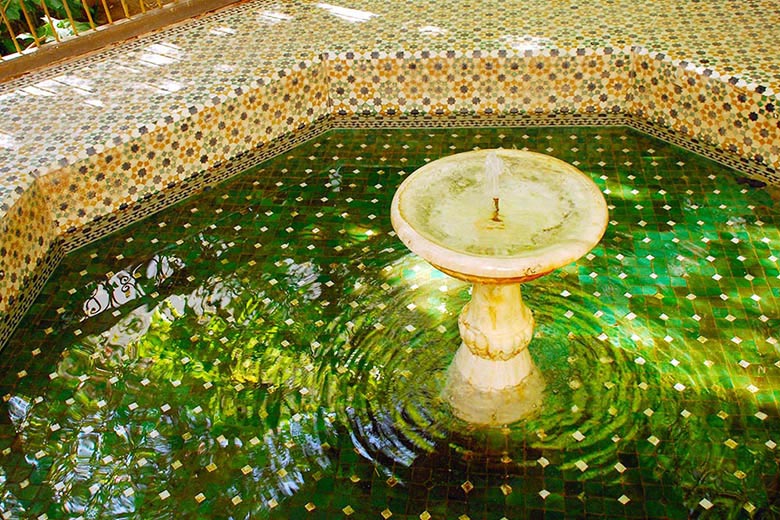
Dar Si Said Museum of Moroccan Arts and Crafts
This museum is home to a wonderful collection of Berber jewellery in finely worked silver, oil lamps from Taroudant, pottery artifacts, embroidered leather, and marble. There is also a display of Moroccan carpets and an amazing collection of traditional Moroccan door and window frames, which highlight this country's local architecture styles.
Distance from Riad ~ 15 mins by foot

Bahia Palace
This magnificent palace was built in the 19th century as the residence of the Grand Vizier Bou Ahmed, who served Sultan Moulay al-Hassan I. The interior decoration is a dazzling display of zellige tiles, painted ceilings and ornate wrought-iron features showcasing the opulent lives of those high-up in the sultan's favour at that time. The palace is surrounded by sumptuous flower and tree-filled gardens.
Distance from Riad ~ 20 mins by foot
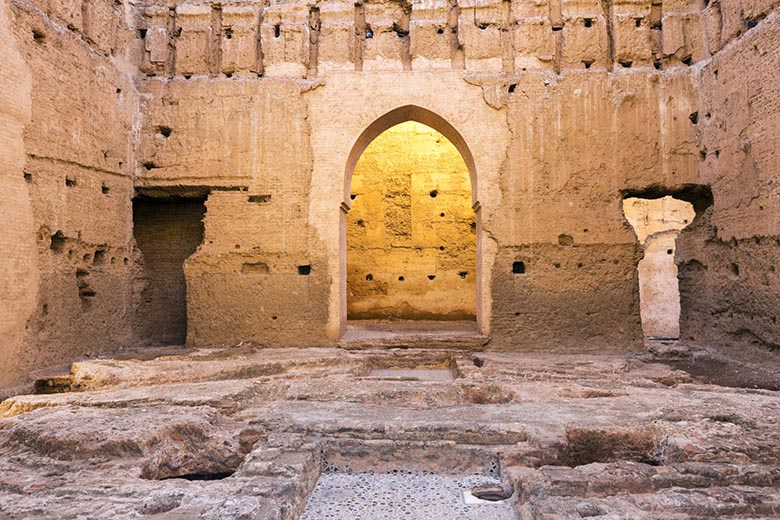
El Badi Palace
Constructed in the 16th century, this now-ruined palace was a glorious sight when it had just been constructed, with 300 rooms decorated in gold, turquoise, and crystal, with luxurious swimming pools and lush gardens. Now, the palace is a museum with several detached compartments showcasing Islamic art and artifacts.
Distance from Riad ~ 23 mins by foot
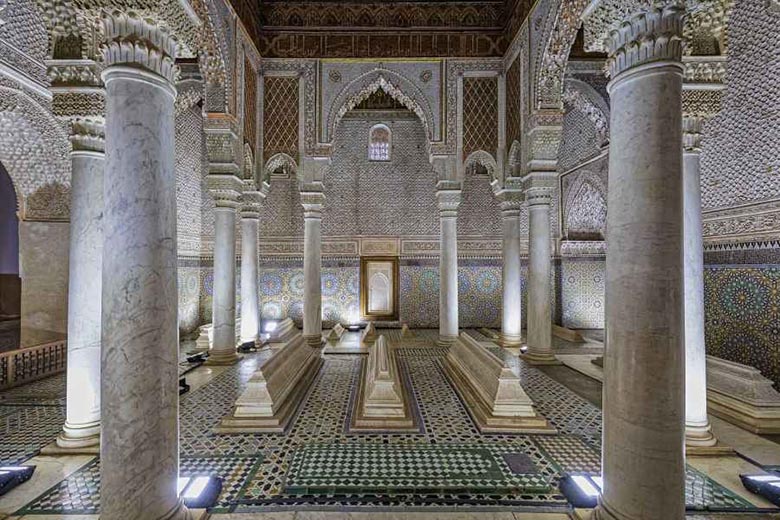
Saadian Tombs
These tombs date back to the end of the 16th century and was opened to the public in 1917 after beig discovered over four centuries later. The Tombs are the resting place of over 60 members of the Saadi family including members of their court.
Distance from Riad ~ 25 mins by foot

Bab Agnaou
The Agnaou door is between the 19 gates of Marrakech. It is an internal door that separates the royal kasbah from the rest of the city. This masterpiece was built in the 12th century in the era of the Almohad Caliph Abd al-Mumin bin Ali al-Koumi.
Distance from Riad ~ 25 mins by foot

Menara Gardens
This inner-city garden is a bubble of serenity hidden right in the heart of Marrakech. Built in the late 19th century, it's a local-favourite spot for getting out of the hustle to enjoy some peace and quiet and the large pool in the center of the garden has a fine pavilion. For many local Marrakech families the gardens are picnicking central and on weekends can be a great place to witness local family life.